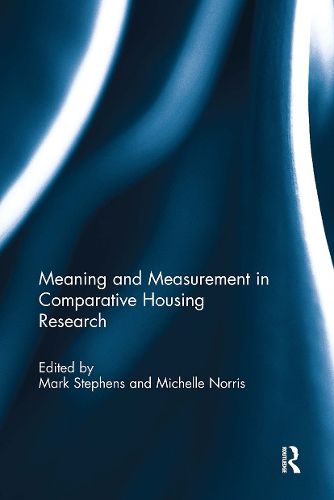Readings Newsletter
Become a Readings Member to make your shopping experience even easier.
Sign in or sign up for free!
You’re not far away from qualifying for FREE standard shipping within Australia
You’ve qualified for FREE standard shipping within Australia
The cart is loading…






The last two decades have seen a marked growth in comparative research within the field of housing studies. This reflects the increasing globalisation of housing finance and therefore the interconnectedness of housing markets, growing interest among researchers and policy makers in learning from developments in other countries and the availability of more funding and better comparative data to support their endeavours.
Concurrently, comparative housing research has become more sophisticated, as research training has improved, the number of journals publishing this research has increased and researchers have become what one might call more 'methodologically aware'.
However, despite these developments, there is no single volume book that deals with the distinct challenges that arise from comparative housing research, compared to other fields of comparative policy analysis. These challenges relate to spatial fixity of housing, its dual role as a consumption and investment good, and as the "wobbly pillar" of the welfare state, which is delivered using a complex mix of government and market supports.
This volume reflects on the significant methodological strides made in the comparative housing research field during this period. The book also considers the considerable challenges that remain if comparative housing research is to match the methodological and theoretical sophistication evident in other comparative social science fields and maps a route for this journey.
This book was published as a special issue of the International Journal of Housing Policy.
$9.00 standard shipping within Australia
FREE standard shipping within Australia for orders over $100.00
Express & International shipping calculated at checkout
The last two decades have seen a marked growth in comparative research within the field of housing studies. This reflects the increasing globalisation of housing finance and therefore the interconnectedness of housing markets, growing interest among researchers and policy makers in learning from developments in other countries and the availability of more funding and better comparative data to support their endeavours.
Concurrently, comparative housing research has become more sophisticated, as research training has improved, the number of journals publishing this research has increased and researchers have become what one might call more 'methodologically aware'.
However, despite these developments, there is no single volume book that deals with the distinct challenges that arise from comparative housing research, compared to other fields of comparative policy analysis. These challenges relate to spatial fixity of housing, its dual role as a consumption and investment good, and as the "wobbly pillar" of the welfare state, which is delivered using a complex mix of government and market supports.
This volume reflects on the significant methodological strides made in the comparative housing research field during this period. The book also considers the considerable challenges that remain if comparative housing research is to match the methodological and theoretical sophistication evident in other comparative social science fields and maps a route for this journey.
This book was published as a special issue of the International Journal of Housing Policy.